Art Fairs
10 Highlights From Colombia’s ArtBo That Help Make This Art Fair Shine
On offer are forgotten Colombian Land art and an homage to Blade Runner.

On offer are forgotten Colombian Land art and an homage to Blade Runner.

Ben Davis

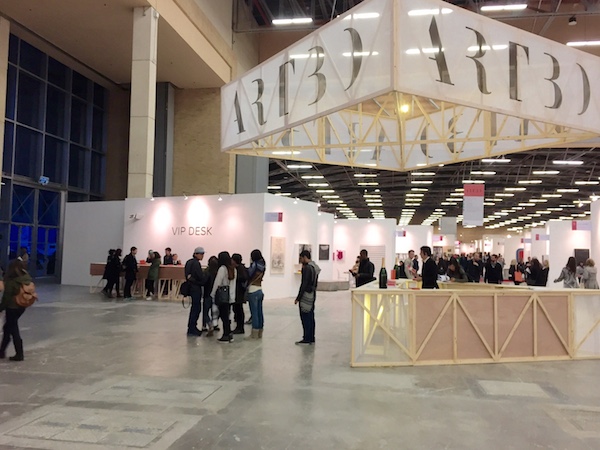
The opening of ArtBo 2015
Photo: Ben Davis
It’s rainy season in Bogotá, Colombia. The capital’s traffic-snarled vibrancy feels muted beneath simmering rain and cloud. Similarly, inside the Corferias convention center for ArtBo, behind multiple layers of metal detectors, the usual fizz and sizzle of the art fair feels cheerful but muted.
The 10-year-old ArtBo, which runs through October 4, is an initiative of the Bogotá Chamber of Commerce, an effort to change the city’s image after the murderous, community-destroying violence that afflicted the country for decades. By now it has become common wisdom that the country, with a back stock of accomplished artists and an economy that has surged on the back of China’s hunger for commodities, is positioned to be an emerging art capital, with ArtBo hoping to harvest the rewards.
“We’ve been coming for four years,” said Julian Posada of Galería de la Oficina, based out of Medellín. “Every year is bigger, with collectors and curators and museums that are more important. The Colombian market and the Latin American market in general continue to grow—despite some moments of crisis.”
A wild card this year for ArtBo is the dramatic crash of the Colombian peso. “Local collectors, when they hear prices in dollars now, they go white,” Instituto de Visión’s Omayra Alvarado said, though she added quickly, “We’ve done very well, I cannot complain at all.” A day into the fair, the Bogotá gallery had already turned over parts of their display.
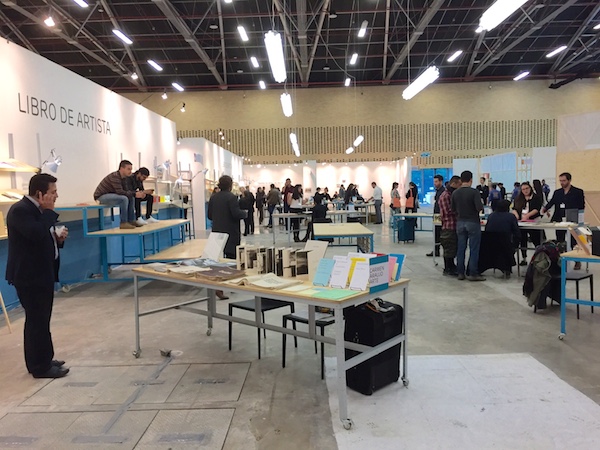
The artists books section at ArtBo
Image: Ben Davis
ArtBo is also by design different than the frenetic atmospheres of Miami or São Paulo, where rival fairs also court the Latin American market. The latter leave the impression of brand names, big things, bright surfaces. ArtBo’s focus is self-consciously on emerging art; its pitch to visitors is discovery.
“What’s beautiful about this fair is that the overall impression is very smooth,” said Johannes Vogt, of the eponymous New York space, a repeat exhibitor. “There’s similar levels of galleries and artworks and historical pieces. But the overall impression is homogenous, in a good way.”
Whatever jitters there may be, dealers were selling, about evenly split between local and international collectors. Prices are modest (by the crazy standards of global art fairs), generally in the thousands or tens of thousands of dollars, and only rarely higher.
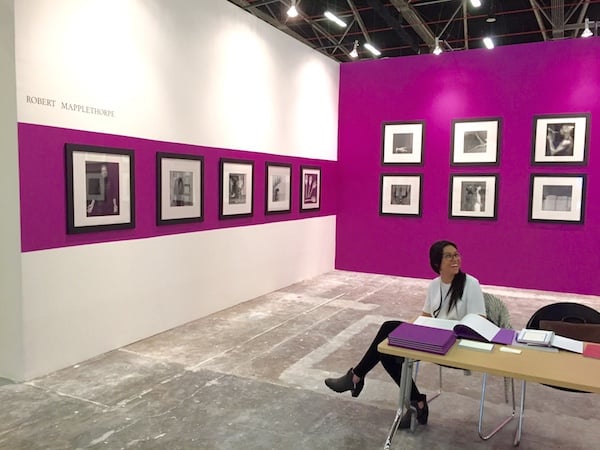
Robert Mapplethorpe at the booth of Pepe Cobo during ArtBo
Image: Ben Davis
Another talking point about present-day Colombian art is that a younger generation eschews the politics of those raised during the everyday carnage of the ’90s. Still, the humble materials and political themes of Colombia’s most commercially and critically visible artist, Doris Salcedo, provide a kind of template for success (though she herself keeps her distance from “the cocktail parties of the ruling classes”). Which is to say that another component of the overall vibe may be that a certain kind of sobriety seems to have become very much a part of mainstream art taste.
To give a sense of its overall atmosphere, here are 10 works that stick out at the fair:
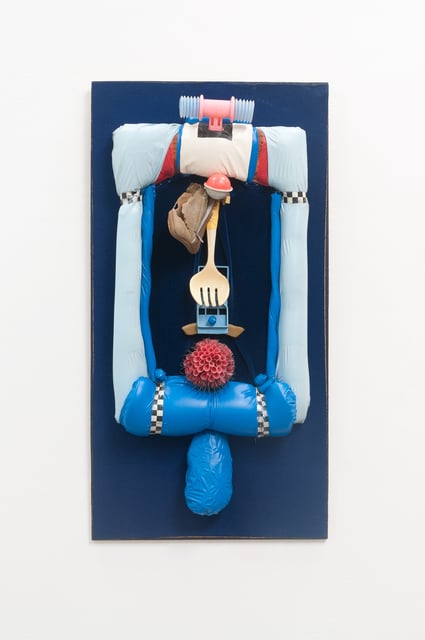
Miguel Angel Cardenas, Oh girl! (1964)
Photo: Courtesy Instituto de Visión
1. Miguel Angel Cardenas, Oh girl!
I couldn’t be more enthusiastic about the booth of Bogotá’s own Instituto de Visión. The gallery’s “Visionaries” program tries to cultivate an audience for under-known Colombians, and Miguel Angel Cardenas (1934-2015) is a great discovery. Gay and an exile to Europe in the 1960s, he forged a singular kind of art that merged pop, happenings, and bawdy humor. The hilarious Hot Vagina, also at the stand, is a yonic metal relief with an actual heating element that makes it function a bit like a very sexualized space heater. Oh Girl!, and its brother Oh Boy!, diagram the human reproductive system using inflatable objects and household goods.
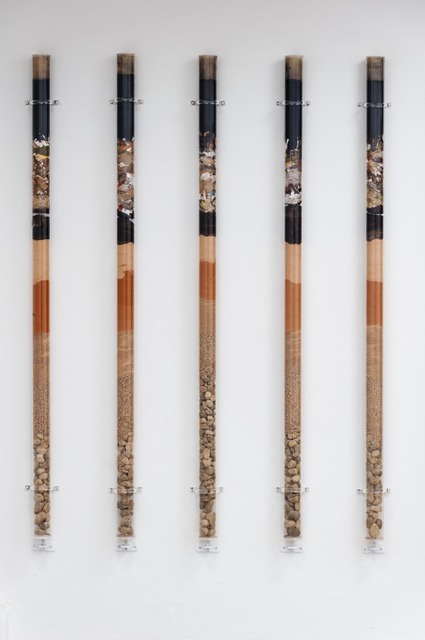
Alicia Barney, Estratificación de un basurero utópico (1987)
Image: Courtesy Instituto de Visión
2. Alicia Barney, Estratificación de un basurero utópico
Alicia Barney (b. 1952) is another discovery at Instituto de Visión (like I said, I love that booth). In the 1970s, she was creating her own sui generis form of Land art, in this case offering up a series of tubular sculptures with debris sorted into layers according to the ideal way to make them biodegradable. “At the time,” Instituto de Visión’s María Wills Londoño explained, “people treated her like she was crazy.” Now, you’d have to be crazy to see her as kind of visionary.

Jorge Julian Aristizabal, Falsos Positivos (2015)Image: Courtesy Galería de la Oficina
3. Jorge Julian Aristizabal, Falsos Positivos
The Medellín gallery has a couple of these works by that city’s own Aristizabal (b. 1962), each one illustrating with great elegance and the symbolic directness of an illuminated manuscript a tragic episode from Colombia’s recent past. Last year at ArtBo, a piece from the same series went to an English collection. (The intricate piece is priced at $25,000,000 pesos, or a little more than $8,000.)
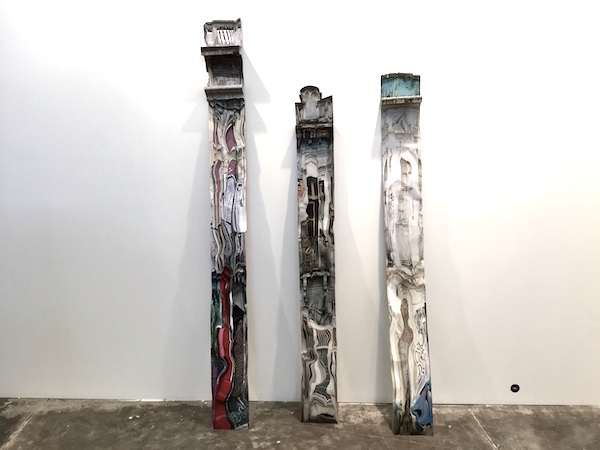
Works by Leyla Cárdenas at Casas Riegner
Image: Ben Davis
4. Leyla Cárdenas, multiple works
Based in Bogotá, Leyla Cárdenas (b 1975) prints warped images of architecture onto these twisted metal pilasters, the distortions of surface and subject moving in and out of synch. Formally, they’re just really interesting objects. (Cárdenas also has some standout work at the smaller Odeón art fair, a satellite of ArtBo.)
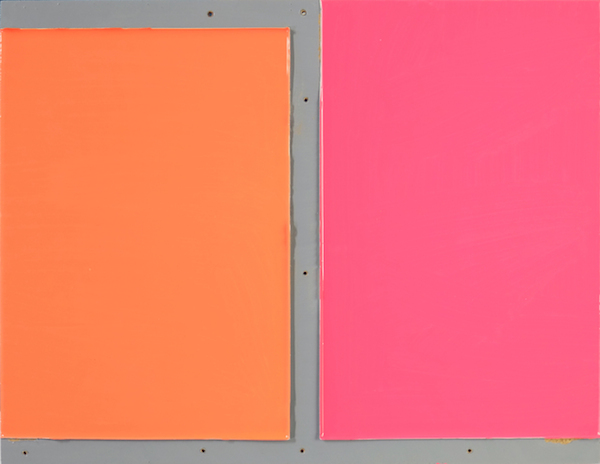
Ricardo Alcaide, Almost Always Together (2015)
Image: Courtesy Johannes Vogt Gallery
5. Ricardo Alcaide, Almost Always Together
Another riff on the built environment. Hailing from Caracas, Ricardo Alcaide (b. 1967) splices the tradition of Latin-American geometric abstraction with a kind of aesthetic of home remodeling, to groovy effect. On Thursday, Johannes Vogt had almost sold through a suite of the paintings at $2,800 each.
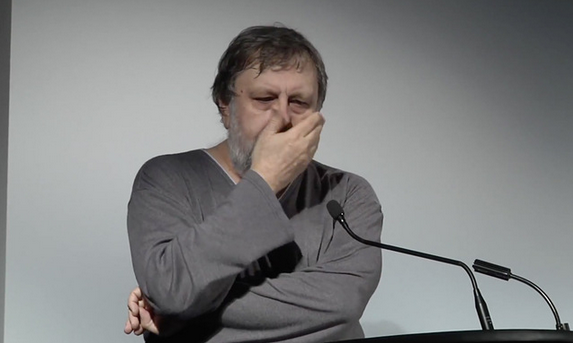
Enric Fort Ballester, And so on (2014)
Image: Courtesy Josedelafuente
6. Enric Fort Ballester, And so on
Sort of a one-liner, but an OK one that adds a touch of web-smart sass to the affair. This Spanish artist, Enric Fort Ballester (b. 1987), takes the recorded lectures of the world’s most famous Lacanian-Marxist-Hegelian pundit and edits him down to just his tics.
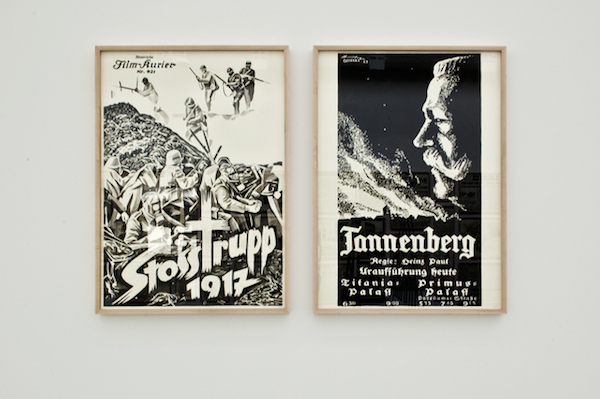
Fernando Bryce, Stosstrupp / Tannenberg (2014) Image: Courtesy of Barbara Thumm
7. Fernando Bryce, Stosstrupp / Tannenberg
The ink-on-paper works are part of the ongoing project of increasingly celebrated, Lima-born Fernando Bryce (b. 1965) to recreate through art various types of posters and other ephemera, targeting different historical epochs semi-systematically. In this case, he is revisitng European movie posters of the turbulent late teens, working his high-contrast filter on them.

Geraldiny Guerrero Muñoz, Ustedes humanos (2014)
8. Geraldiny Guerrero Muñoz, Ustedes humanos
This oddly mesmerizing video from Geraldiny Guerrero Muñoz (b. 1989) is part of an ongoing, multipart project that involves, as I understand it, her also publishing a magazine of the same name, Ustedes humanos. On view in ArtBo’s “Artecámara” section dedicated to young Colombian artists, the dream-like loop is a riff on the spacey video billboard ads in Ridley Scott’s post-human paean Blade Runner.
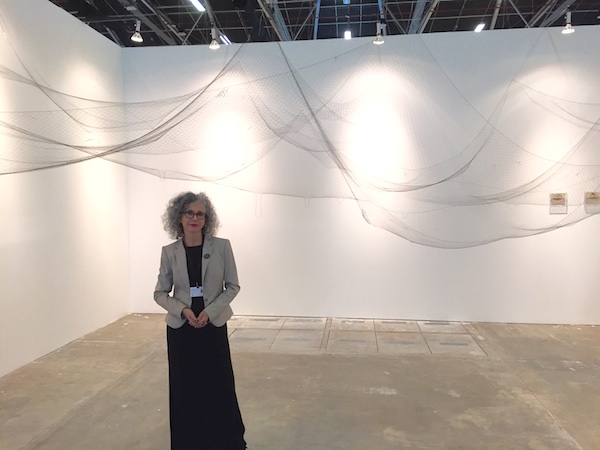
The artist Luz Angela Lizarazo with her work red de niebla(2015) at ArtBo 2015
Galeria Eduardo Fernandes
9. Luz Angela Lizarazo, red de niebla
Suspended above the booth as part of “Sitio,” the fair’s new-for-2015 section dedicated to solo projects, Lazarazo’s altered readymade incorporates a net used by an ornithologist while capturing and tagging jungle birds. Panicked, the birds often tear at the webbing to try to escape. The artist has preserved the net but mended the holes with delicate gold chain, both healing and highlighting the avian struggle against man.
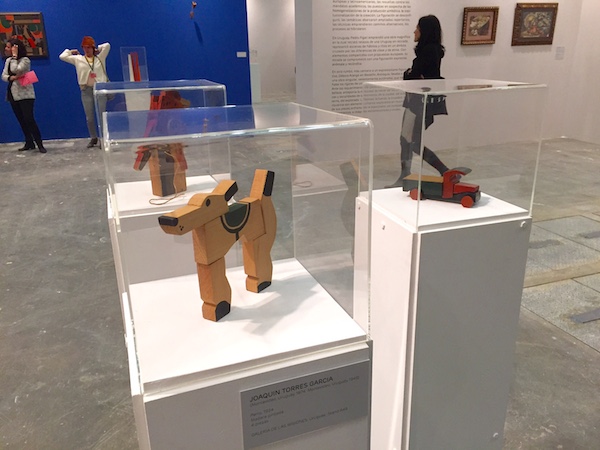
Joaquín Torres-García, Perro (1924) at Galeria de los Misiones
Image: Ben Davis
10. Joaquín Torres-García, Perro
The Uruguayan modern-art great is having a moment on the international stage—his towering accomplishment is about to get a celebration at the Museum of Modern Art in New York. At ArtBo, there are actually some very nice canvasses by him on the walls. But really, you have to love this adorable dog.